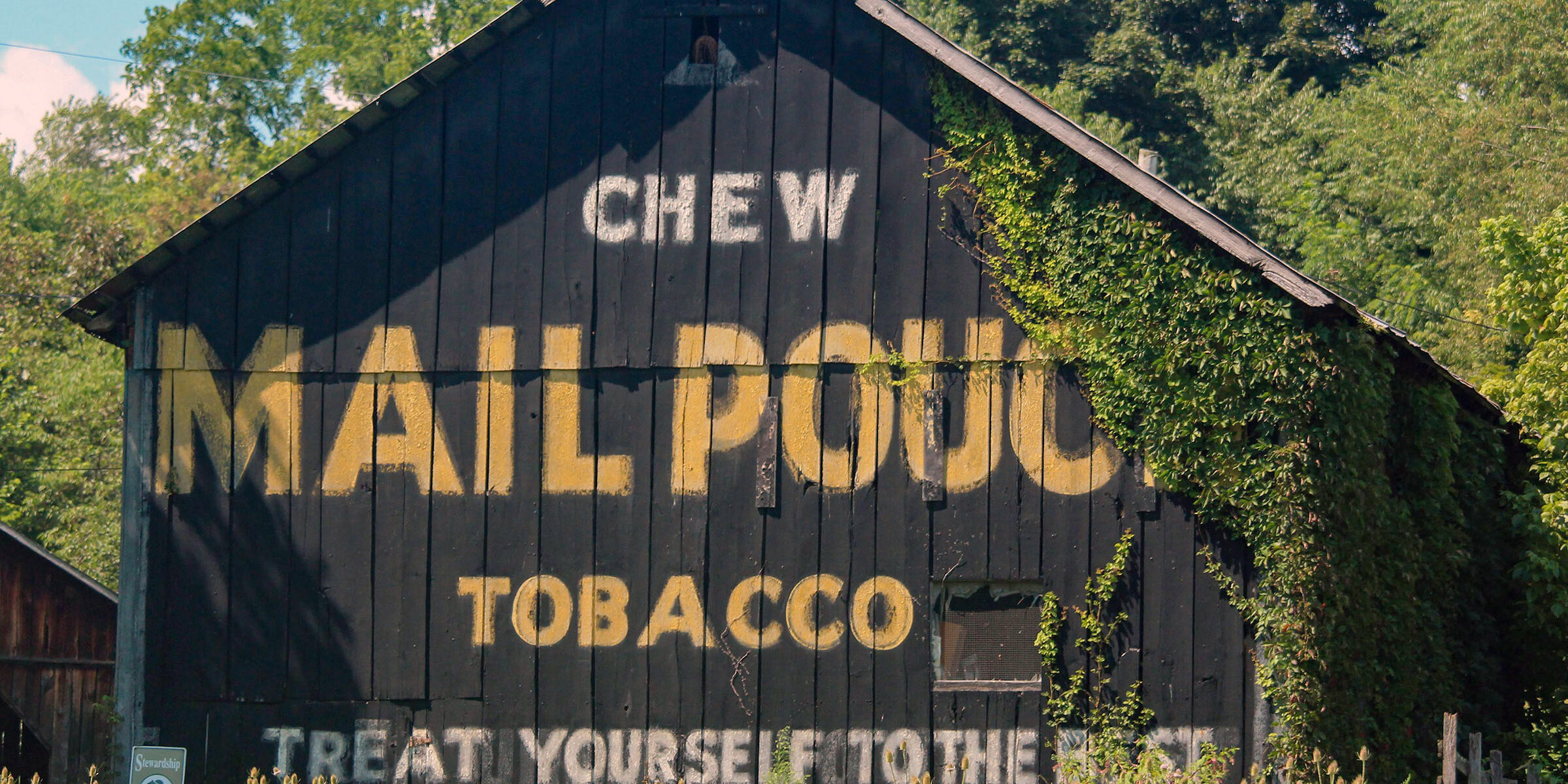An American Heritage: Mail Pouch Barns
For more than a century, one advertising campaign used an unusual medium to feature the same message: “Chew Mail Pouch Tobacco: Treat Yourself to the Best.” The ad and accompanying slogan – painted on barn sides first regionally, then across the country – was the marketing campaign of the Bloch Brothers Tobacco Company of Wheeling, West Virginia.
As there were no standard billboards, companies used the sides of barns and buildings to spread the word to the public. The ads for Mail Pouch Tobacco began appearing on barns in 1892, hitting a peak in the 1960’s with approximately 20,000 barns in 22 states. Traditional colors for the Mail Pouch Barns consist of yellow and white lettering with backgrounds of red, black, brown, gray or brick. The barn was trimmed in blue where the initials of the painter and date were marked as well.
In the late thirties, billboards began to pop up across the country. Mail Pouch decided not to go with billboards and stayed with barns. Mail Pouch gained additional barns as the companies left to advertise on billboards which resulted in a vast number of displays along highways.
Harley Warrick of Belmont, Ohio, joined a crew of barn painters in 1946 when he returned from World War II. He is given credit for painting or retouching over 20,000 signs and has become the most famous painter associated with Mail Pouch Barns. It took an average of six hours to paint each barn sign, and often began painting with the letter “E” in the word “Chew.”
Other barns were painted by Mark Turley, Don Shires, Dick Green and several others.
In 1965, the U.S. Highway Beautification Act banned billboards or ads within a 660 feet control zone of a federally funded road, effectively putting an end to the campaign. Nine years later, the act was amended to exempt Mail Pouch Barns as “landmark signs” due to their historic significance.
Warrick continued to paint or touch up hundreds of barns every year until he retired in 1992, at which point the campaign ended. When he died in 2000, he was widely regarded as the last of the Mail Pouch Barn painters. To learn more about Harley Warrick, read “The Barn Painter,” written by Harley and his son, Roger.
A large portion of the barn signs were located in coal mining areas as coal miners were the best customers of the product. Smoking was not allowed in the mines and miners believed the chew decreased the dust of their work environment.
In Greene County, at least thirty Mail Pouch Barns once stood along the major thoroughfares of Routes, 21, 19, 18 and 88. Over time with weather and natural decay, only seven remain on private property.







